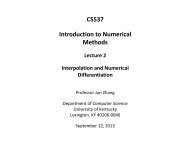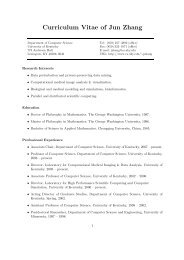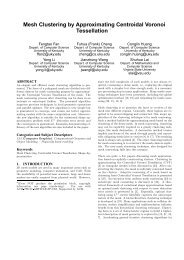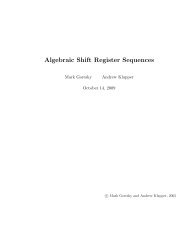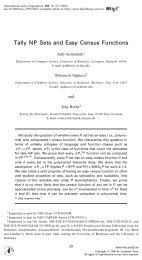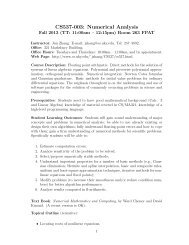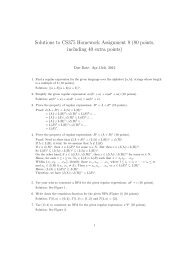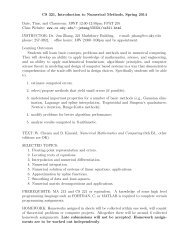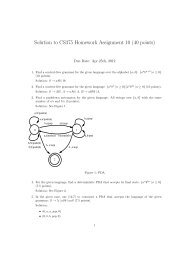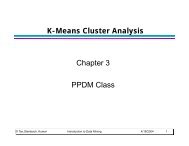Lecture 4 - Computer Science Department - University of Kentucky
Lecture 4 - Computer Science Department - University of Kentucky
Lecture 4 - Computer Science Department - University of Kentucky
You also want an ePaper? Increase the reach of your titles
YUMPU automatically turns print PDFs into web optimized ePapers that Google loves.
We integrate over p(x) as<br />
∫<br />
b<br />
a<br />
f ( x<br />
)<br />
dx ∫ p<br />
( x<br />
)<br />
dx<br />
where we can compute<br />
Gaussian Quadrature<br />
b<br />
≈ ∫ a<br />
n<br />
n<br />
b<br />
= ∑ f ( xi<br />
) ∫ l =<br />
a i ( x)<br />
dx ∑<br />
i=<br />
0<br />
i=<br />
1<br />
i<br />
∫<br />
= b l<br />
a i<br />
A ( x)<br />
dx<br />
A<br />
i<br />
f ( x<br />
Note that the polynomial interpolation is exact for a polynomial <strong>of</strong><br />
degree at most n. It follows that the integration will be exact for such<br />
polynomials<br />
If the nodes can be chosen carefully, it is possible to increase the order<br />
<strong>of</strong> polynomial with the exact integration remarkably. This was<br />
discussed by Karl Gauss<br />
i<br />
)<br />
48



